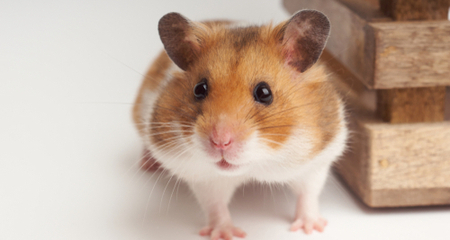Best Hamsters for Kids’ Responsibilities
As parents, one of our primary goals is to teach our children responsibility, and what better way to do this than by introducing them to the joy of pet ownership? Hamsters are one of the most popular pets for children due to their small size, minimal space requirements, and engaging personalities. However, not all hamsters are created equal when it comes to being good pets for kids. In this article, we will explore the best hamsters for kids, highlighting their ideal characteristics, care requirements, and the responsibilities that come with owning one.
According to statistics, pet ownership can significantly improve children’s emotional development and build essential life skills. In addition, having a pet can teach kids important lessons about empathy, nurturing, and responsibility. Through hamster care, children learn the value of commitment as they take on daily responsibilities, such as feeding, cleaning, and playing with their pet.
This guide will provide an in-depth overview of the best hamster breeds for kids, the responsibilities associated with hamster care, and tips for planning a successful pet ownership experience. By the end of this article, you’ll understand which hamsters are best suited for young owners and how they can help foster a sense of responsibility within your child.
Why Choose a Hamster as a Pet?
Hamsters are ideal first pets for children for several reasons:
- They are relatively inexpensive to purchase and maintain.
- Hamsters require minimal grooming and care.
- They are available in various breeds, each with unique traits.
- Hamsters have a short lifespan, usually between 2-3 years, making it easier for kids to cope with the life cycle of a pet.
Understanding Kids’ Responsibilities with Hamsters
Owning a hamster may seem like a simple task, but it comes with crucial responsibilities. Introducing these responsibilities to your children can provide them with the foundation they need to become responsible pet owners.
Daily Care Tasks
- Feeding: Kids should learn to accurately measure and provide the appropriate food for their hamster.
- Watering: Regularly check the water supply and refill as necessary to ensure the hamster stays hydrated.
- Playtime: Engage in interactive play sessions to bond with their pet and provide mental stimulation.
Weekly and Monthly Care
- Cage Cleaning: Regularly clean the cage to maintain a hygienic environment, which is essential for both the hamster’s health and the household.
- Health Monitoring: Check for any signs of illness and maintain a note of the hamster’s behavioral patterns.
Top Hamster Breeds for Kids
When selecting a hamster, specific breeds are more suitable for children due to their temperaments and care requirements. Let’s take a closer look at the best options available.
Syrian Hamster

The Syrian hamster, also known as the golden hamster, is one of the most popular pet hamster breeds and an excellent choice for kids. They are generally friendly and can easily adapt to handling. Here are some reasons why Syrian hamsters shine as a family pet:
- They are larger in size, making them easy to handle compared to smaller breeds.
- Syrians have a friendly nature and tend to be more sociable with their owners.
- They can be kept alone, which eliminates the challenge of keeping a pair of hamsters compatible.
Dwarf Campbell’s Hamster
Dwarf Campbell’s hamsters are smaller than Syrian hamsters and are known for their friendly temperaments. They are also slightly less independent and enjoy social interaction:
- They may require a bit more space due to their energetic nature.
- These hamsters thrive when kept in pairs, but they must be introduced at a young age.
- Children can enjoy watching their sweet interactions if kept in a pair.
Roborovski Hamster
The Roborovski hamster is the smallest of the dwarf hamsters and is renowned for its lively and curious nature:
- They are very quick and agile, making them fascinating pets to observe.
- They often enjoy the company of other Roborovskis.
- Although they are friendly, they are less prone to handling, making them better for children who appreciate observing over direct interaction.
Responsible Pet Ownership: Essential Tips
To ensure a positive hamster ownership experience, there are several essential tips parents should share with their children:
Creating the Right Environment
Setting up the hamster’s cage is one of the first tasks children should learn. A clean and spacious habitat will ensure your hamster feels safe and comfortable:
- Choose a suitable cage with ample space, ventilation, and secure barriers.
- Provide appropriate bedding material, a water bottle, and a food dish.
- Include tunnels, chew toys, and an exercise wheel to satisfy their natural instincts.
Hygiene Practices
Teaching children the importance of hygiene is crucial in pet care:
- Always wash hands before and after handling the hamster or cleaning the cage.
- Regularly replace bedding to maintain cleanliness and prevent odor.
- Dispose of waste properly to keep the environment safe for both the pet and the family.
Conclusion
Hamsters are fantastic pets for children to learn responsibility. By caring for a hamster, children gain insight into empathy, dedication, and the importance of routine. Syrian, Dwarf Campbell’s, and Roborovski hamsters are the ideal breeds to consider for youngsters.
Ultimately, introducing a hamster into your home can be an enriching experience for both your child and the pet. It provides an excellent opportunity to foster responsibility, cultivate a sense of care, and enjoy the delightful companionship that comes with owning a furry friend.
For further details on hamster care and responsibilities, check out these resources:
